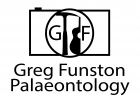On April 8th, 2024, between about 3:18–3:20 pm in eastern Ontario, the Moon passed in front of the Sun, completely blocking its light in a narrow strip of the Earth. Based on traffic, I was one of hundreds of thousands (maybe millions) of Canadians who made the trek down to Niagara to witness this phenomenon: totality. And it was totally worth it.

Eclipses are, somehow, both supernatural and a fundamental part of nature at the same time. The cosmic conjunction and coincidence of so many events at the same time is exceedingly rare, and yet completely predictable based on relatively simple laws of physics that humans have known for thousands of years. For example, in almost the exact same strip of land, the Haudenosaunee wove the wampum of their Great Law of Peace shortly after an eclipse in 1142 (although there is some debate about the date). The experience of a total eclipse is humbling; it’s easy to see how it might remind warring nations that we’re all a very small part of a bigger picture.

My main objective for the trip was to see the total eclipse with my own eyes, and that was a great success. I owe much of that to my wife, Britt, who organized a lovely afternoon for us and some friends at The Good Earth vineyard, which is absolutely gorgeous. But I also wanted to photograph the eclipse, because it’s a once-in-a-lifetime opportunity. Fortunately, that was also very successful. My photography rig (at left during totality; image by Brittany Prokop) included two cameras, two tripods, and a bunch of filters. I had one camera shooting on a timer every 5 seconds, and another that I was shooting manually. My priority was some nice images of the totality, but I really wanted to get images that conveyed the phases of the eclipse and how the two celestial bodies moved. I think I was able to achieve that in a composite image that combined photos from both of my cameras.

In our area, there were thick clouds at the start of the eclipse, so I don’t have any good images of the early phases of the transit. We saw a few patches of blue sky heading our direction, and we were incredibly lucky that we had only a thin veil of clouds during totality–the moments where the moon completely covers the Sun and the corona of the Sun becomes visible. We were able to see the bright ring with our naked eyes, as the temperature dropped, we started to see our breath, and an eerie twilight darkness passed over us. Usually, when the sun sets and it gets dark, the direction of the light changes and we perceive a brighter horizon in one direction than another. During the eclipse, that wasn’t true, and the bizarre lighting felt a bit disconcerting and uneasy. It’s clear why people have held total eclipses in such esteem for millennia.




Then, two and a half minutes later, everything was back to normal and the world went about their days again. We made our way back to Toronto through ~ 3 hours of traffic (for what had been a 1-hour drive down), with a new appreciation for the cosmic forces above our heads.

